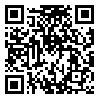Mon, Jul 21, 2025
[Archive]
Volume 12, Issue 2 (6-2022)
ASE 2022, 12(2): 3838-3846 |
Back to browse issues page
Download citation:
BibTeX | RIS | EndNote | Medlars | ProCite | Reference Manager | RefWorks
Send citation to:



BibTeX | RIS | EndNote | Medlars | ProCite | Reference Manager | RefWorks
Send citation to:
Moosavian A, Hosseini A, Jafari S M, Chitsaz I, Baradaran Shokouhi S. Machine Vision–Based Measurement Approach for Engine Accessory Belt Transverse Vibration Based on Deep Learning Method. ASE 2022; 12 (2) :3838-3846
URL: http://ijae.iust.ac.ir/article-1-611-en.html
URL: http://ijae.iust.ac.ir/article-1-611-en.html
Ashkan Moosavian 
 , Alireza Hosseini
, Alireza Hosseini 
 , Seyed Mohammad Jafari
, Seyed Mohammad Jafari 
 , Iman Chitsaz
, Iman Chitsaz 
 , Shahriar Baradaran Shokouhi
, Shahriar Baradaran Shokouhi 


 , Alireza Hosseini
, Alireza Hosseini 
 , Seyed Mohammad Jafari
, Seyed Mohammad Jafari 
 , Iman Chitsaz
, Iman Chitsaz 
 , Shahriar Baradaran Shokouhi
, Shahriar Baradaran Shokouhi 

Department of Agricultural Engineering, Technical and Vocational University (TVU), Tehran, Iran
Abstract: (12506 Views)
In this paper, to address the problem of using displacement sensors in measuring the transverse vibration of engine accessory belt, a novel non-contact method based on machine vision and Mask-RCNN model is proposed. Mask-RCNN model was trained using the videos captured by a high speed camera. The results showed that RCNN model had an accuracy of 93% in detection of the accessory belt during the test. Afterward, the belt curve was obtained by a polynomial regression to obtain its performance parameters. The results showed that normal vibration of the center of the belt was in the range of 2 to 3 mm, but the maximum vibration was 8.7 mm and happened in the engine speed of 4200 rpm. Also, vibration frequency of the belt was obtained 124 Hz. Moreover, the minimum belt oscillation occurred at the beginning point of the belt on the TVD pulley, whereas the maximum oscillation occurred at a point close to the center of the belt at a distance of 16 mm from it. The results show that the proposed method can effectively be used for determination of the transvers vibration of the engine accessory belts, because despite the precise measurement of the belt vibration at any point, can provide the instantaneous position curve of all belt points and the equation of the belt curve at any moment. Useful information such as the belt point having the maximum vibration, belt slope, vibration frequency and scatter band of the belt vibration can be obtained as well.
Type of Study: Research |
Subject:
Internal Combustion Engines (ICE, ...)
Send email to the article author
| Rights and permissions | |
 | This work is licensed under a Creative Commons Attribution-NonCommercial 4.0 International License. |




